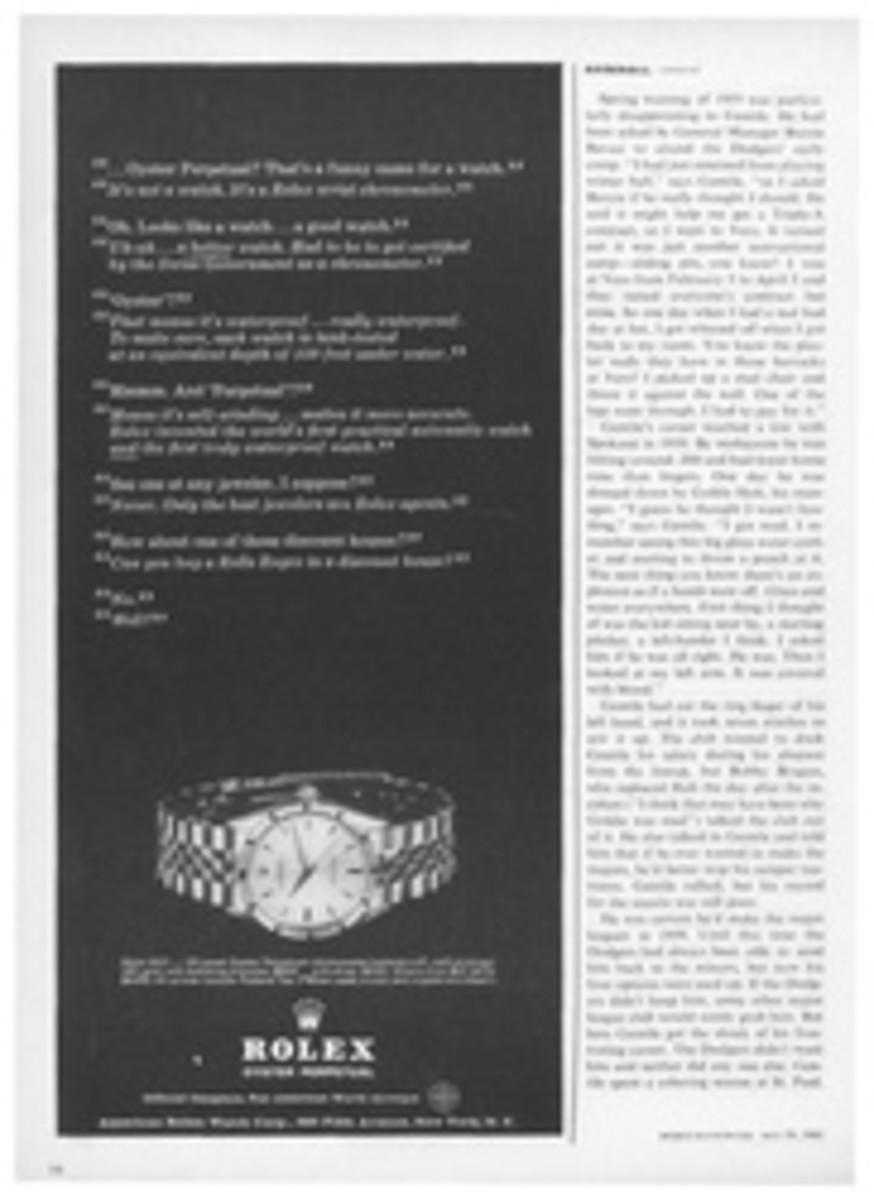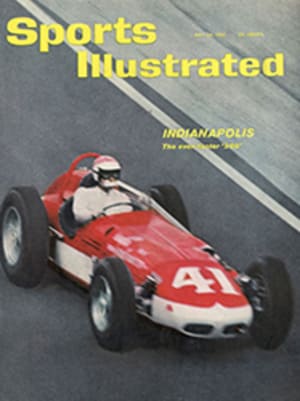
HOW TO ENJOY A TROTTING RACE
Harness racingdrew more than 15 million patrons last year. For those who have followed itsince county fair days, this is simple justice. Graceful gaited horses pullingdelicately fashioned sulkies in close-quarters competition make a charmingspectacle, but one that is not always easy to understand. The strategy ofdriving is different from that of other horse races, if only because of thewidth (four feet) of the sulky. Knowing some of the techniques of driving addsgreatly to the pleasure of watching. On the following pages Del Miller, thesport's finest tactician and winner of practically every major stakes,describes his own progress through a typical one-mile race on a half-miletrack.
Before the racestarts
Unlike Thoroughbreds, harness horses require a thorough warming up before arace because they are somewhat tougher animals. We do this (below) by firstjogging them easily the "wrong" way of the track (that is, clockwise)several times and then giving them two moderately rapid short sprints, called"scores," the "right" way. Our sulkies (left top) weigh 32 to35 pounds, are 46 to 52 inches wide and 25 to 32 inches high at the seat. I usethe narrowest, lightest sulky suitable for a particular trotter. Besides thereins, all drivers carry stop watches (left) to make periodic checks on thepace of a race.
Trotting up tothe starting line
The mobile starting gate picks up the horses on the backstretch, brings them upto the starting line and then pulls away rapidly. In this race I am driving theNo. 6 horse, an average, usable trotter. My strategy here depends on myknowledge of the horses inside of me (positions 1 through 5). Since a number ofthem are fast starters, I will not try for the lead but will drop in on therail as close to the lead as possible.
1 Saving groundin the first turn
The No. 1 and No. 3 horses race head and head for the lead. In the turn No. 3'sdriver sees he cannot outtrot No. 1 (diagram, right); to avoid being stuckoutside ("parked out") he moves to the rail. I am satisfied to drop inbehind him. I am saving ground, and I am "covered up"—that is, I havehorses ahead of me, breaking the wind. All of these drawings are made from aspectator's position (X) in the stands.
2 Sparring alongthe backstretch
Coming out of the first turn, I notice that the lead driver is slowing thepace. This is my chance to improve my position, and I must take it quickly. Iknow my horse has a good burst of speed, so I go after No. 1 before the otherhorses can move up alongside and box me in. No. 1 keeps me outside a short way,but I make the front O.K. At the same time, No. 5 takes advantage of my moveand follows me on the outside.
3 Approaching thesecond turn
Since I have now "brushed" my horse—gone at top speed—for an eighth ofa mile, I decide to conserve him and let No. 5 go. If I keep No. 5 parkedoutside too long and then let him go—a common tactical error—I'll be behind atired horse later in the race. He might "die" and trap me as othersmove up. Note how No. 5 makes sure he has plenty of sulky room before cuttingin to avoid "interference."
4 Decision at thehalf
Now we're in front of the stands, and No. 4 decides to make his move. No. 1follows No. 4. This is a critical moment for me. My chance of winning is tokeep as much as possible in reserve until the final part of the race. I havealready brushed my horse once. Only superhorses have more than two such burstsof speed. So I stay put on the rail, taking the risk of being stuck there. Iwill lose position but save ground.
5 Second trip onthe backstretch
Coming up to the three-quarter mark, No. 4 is still trying desperately for thelead, but No. 5 keeps him outside. This would have happened to me, too, if Ihad followed No. 4. I am hemmed in, but I can see that No. 4 is tiring badlybecause he has been parked out for a quarter mile. My hope is that No. 4 willlose ground in the last turn, forcing No. 1 outside and leaving room for me toslip through between horses.
6 Scrambling intothe homestretch
Just as I hoped, No. 4 falls back as we go through the turn, where an outsidehorse has to cover more ground than one closer to the rail. I charge throughthe gap opening between No. 4 and No. 5. No. 1 has to go wide around No. 4, andNo. 3 closes up the hole behind me. Thus far, No. 3 has had the easiest trip,never having challenged for the lead and staying on the rail all the way. Buthe must find a hole, quickly, or go far outside and lose much ground if he isto catch me in the stretch.
7 The finalbattle down to the wire
As the momentum of rounding the turn carries No. 5 a little wide, No. 3 getshis break. He slips in along the rail. He and I are the freshest, and thestretch drive is between No. 3 and No. 6. But No. 3's opportunity came a shadetoo late, and I am able to beat him. Actually, my move coming out of the veryfirst turn was decisive. Few trotting races are won just by stretch drives;more important are the early moves a driver makes to improve position withoutsacrificing all his trotter's energy.
THIRTEEN ILLUSTRATIONS
BURT SILVERMAN
DIAGRAM
1
DIAGRAM
2
DIAGRAM
3
DIAGRAM
4
DIAGRAM
5
DIAGRAM
6
DIAGRAM
7

